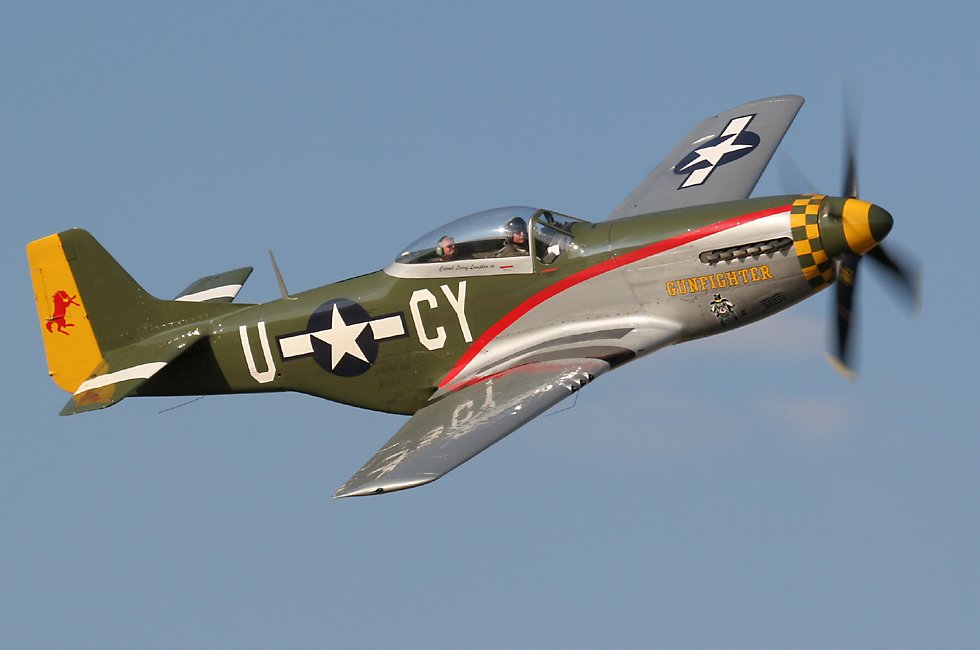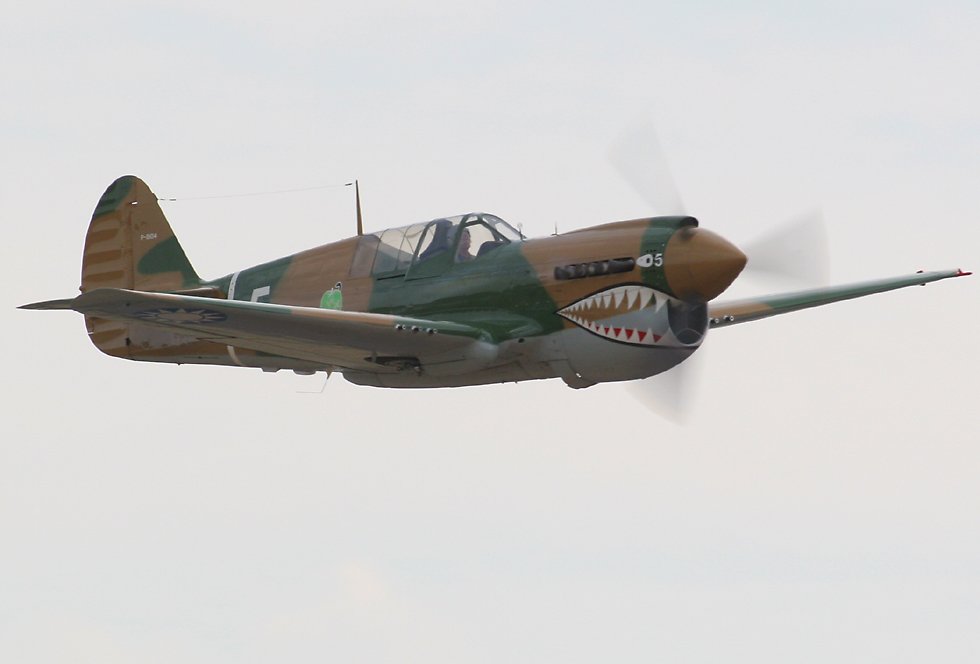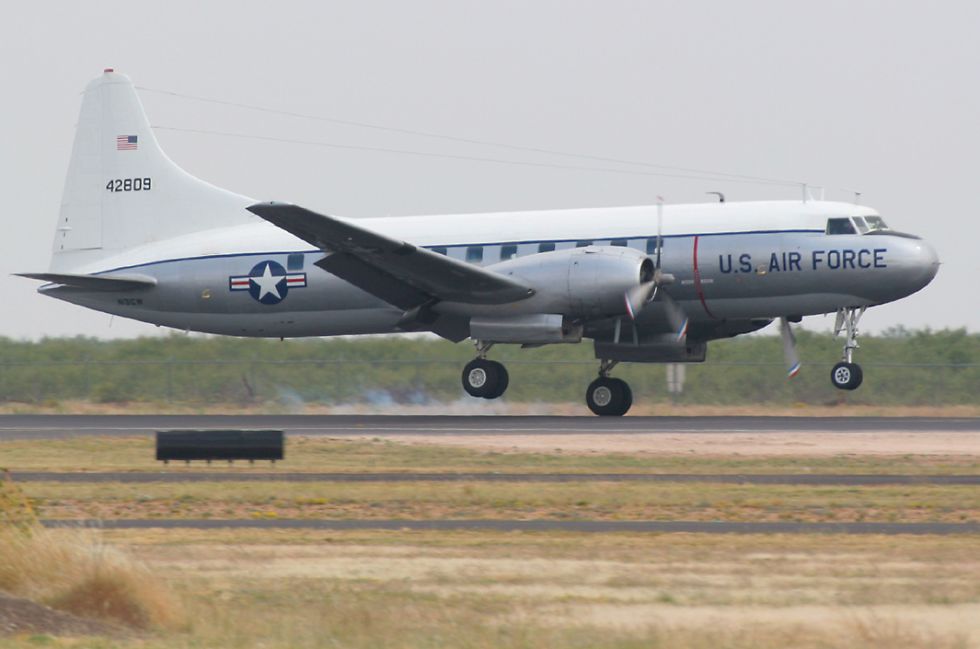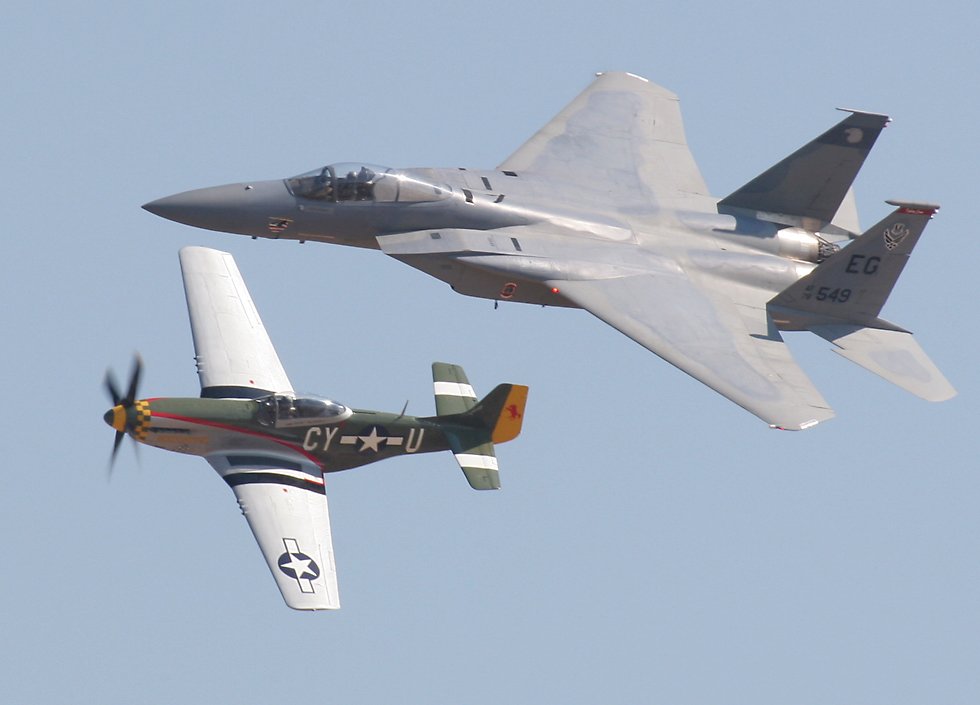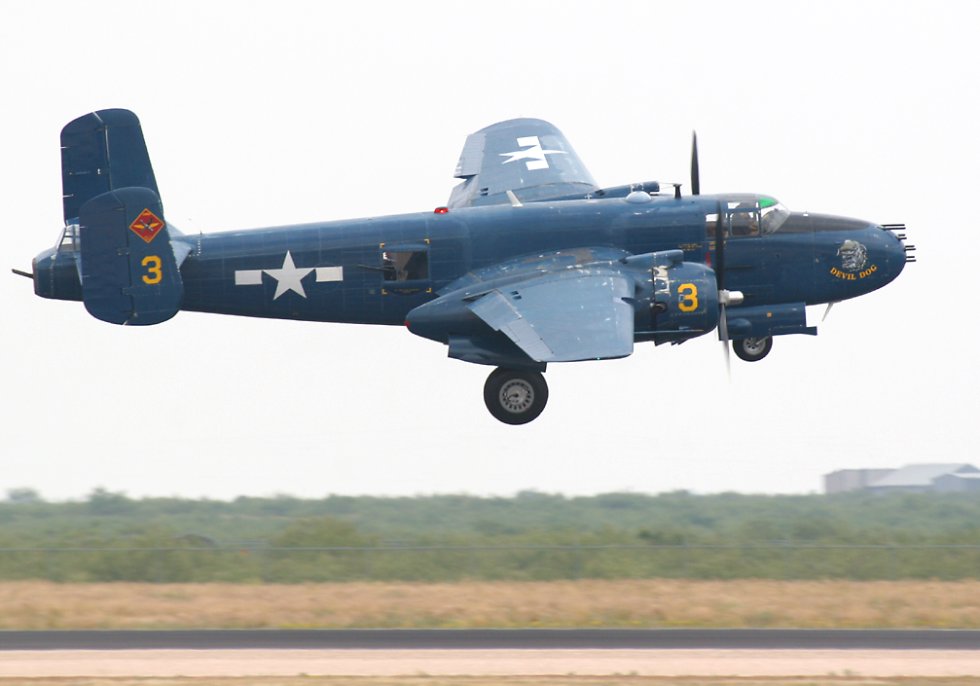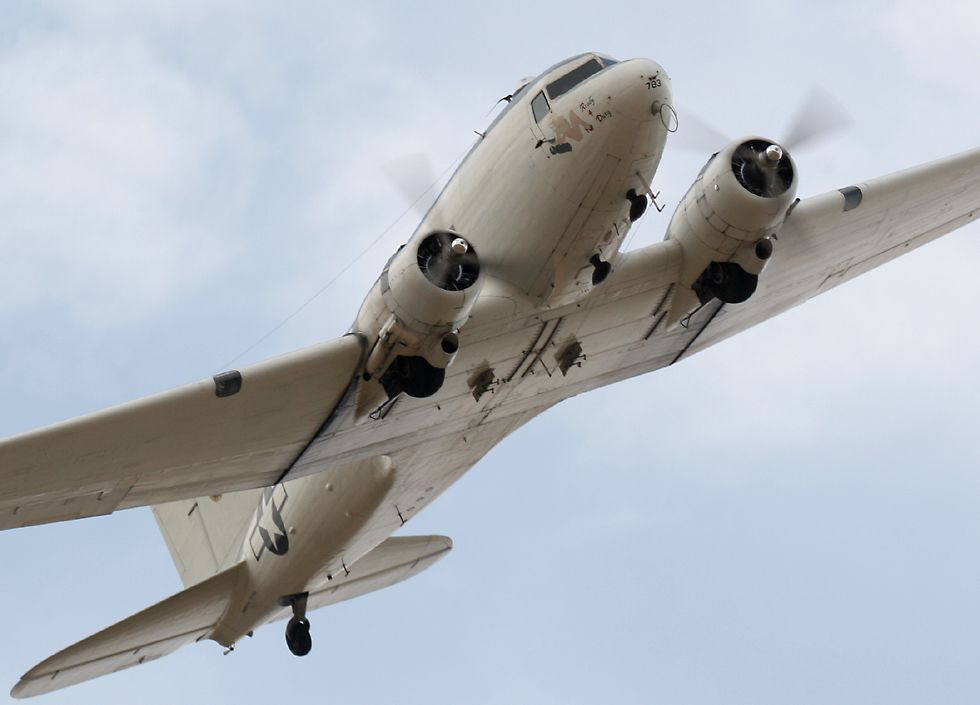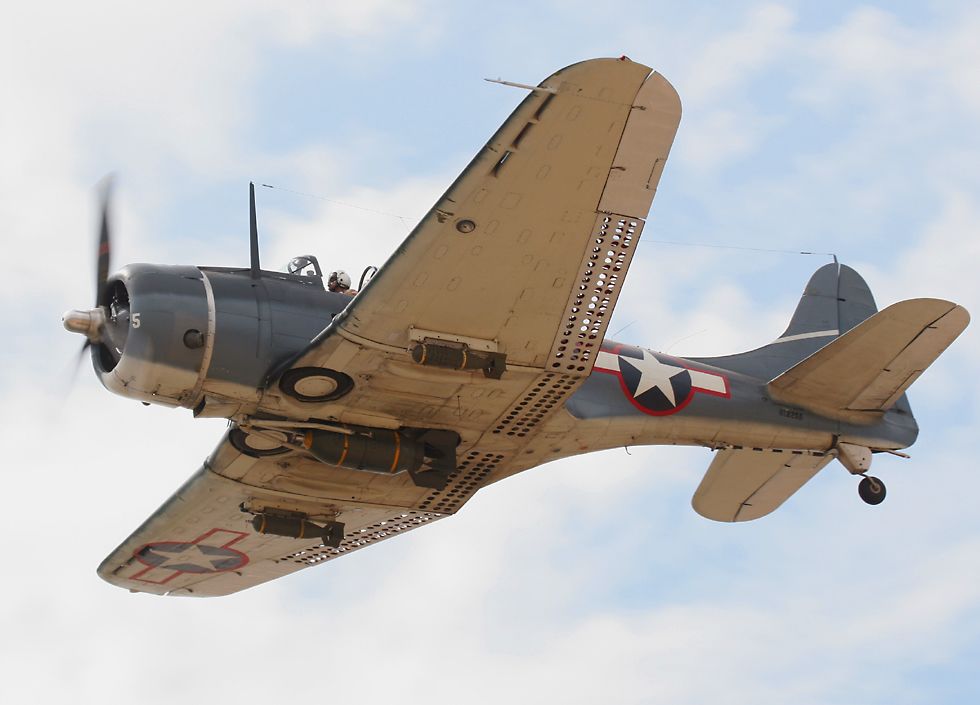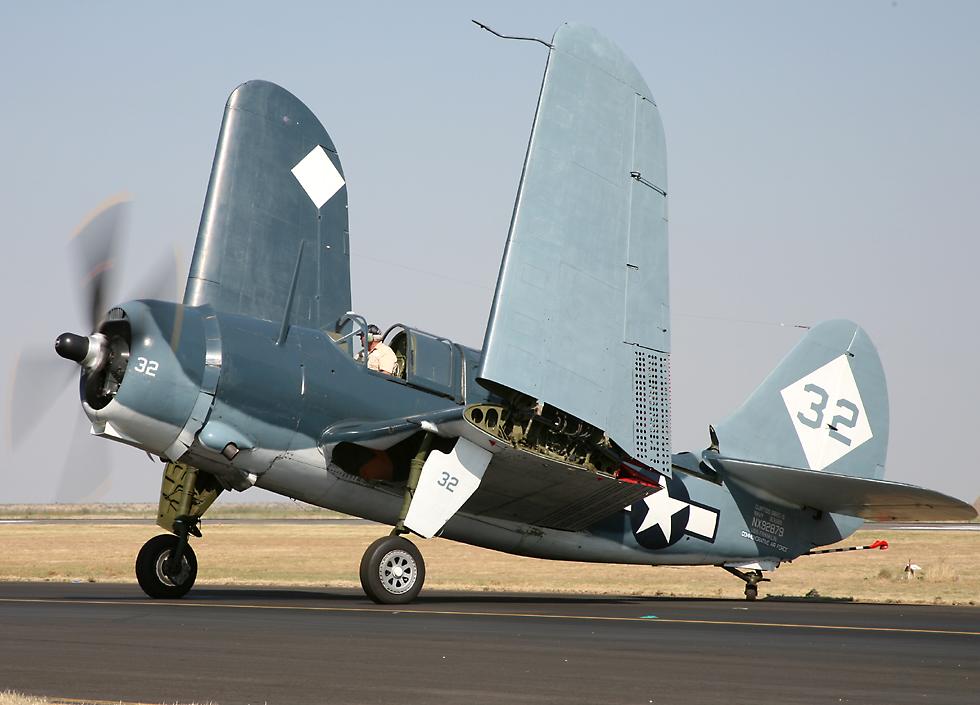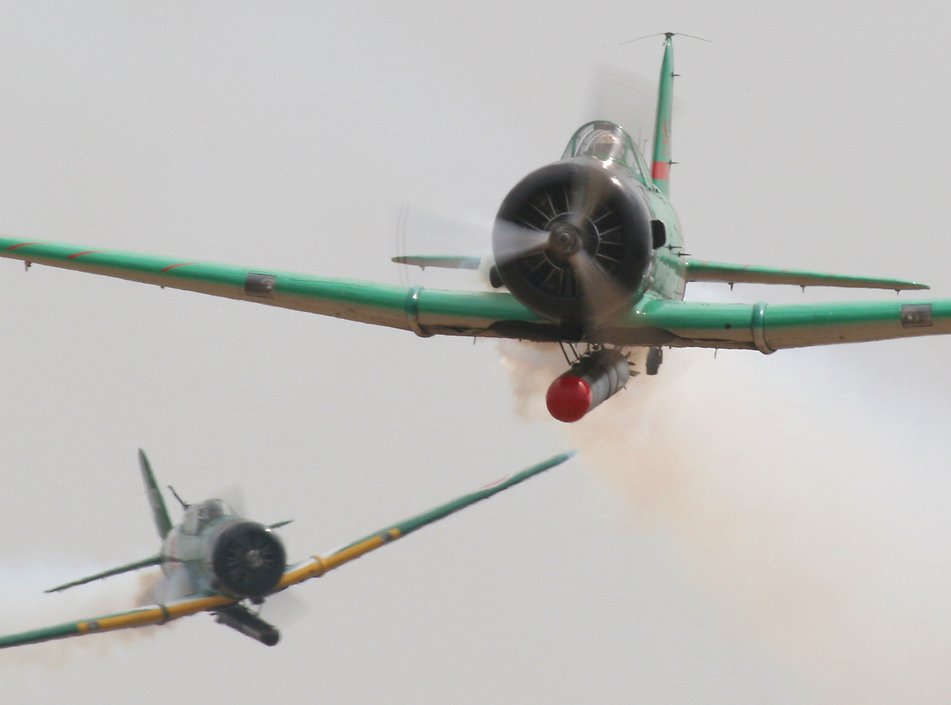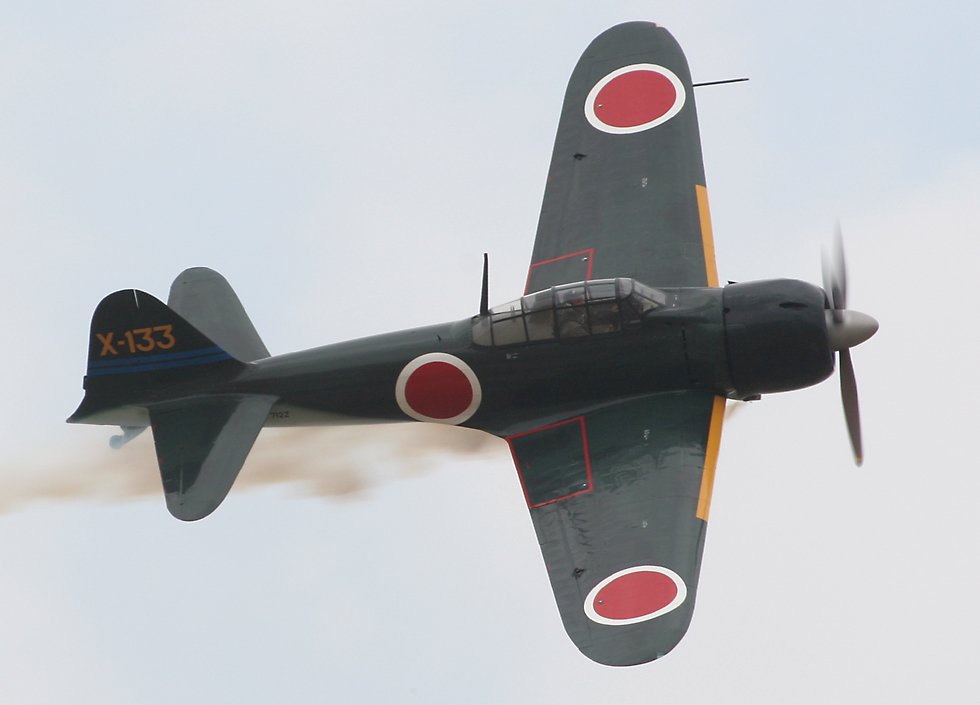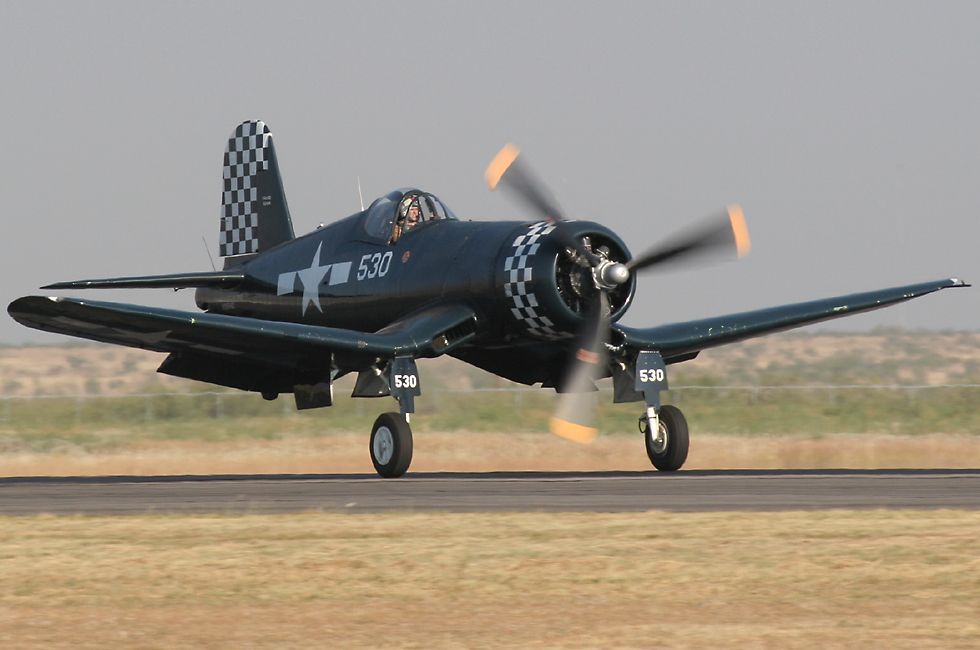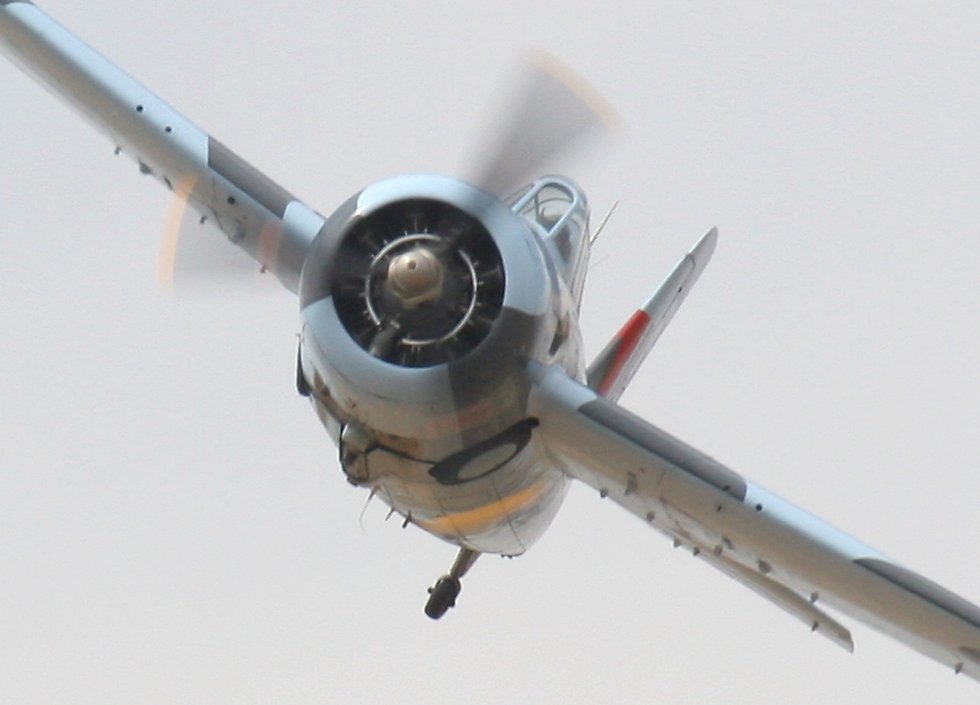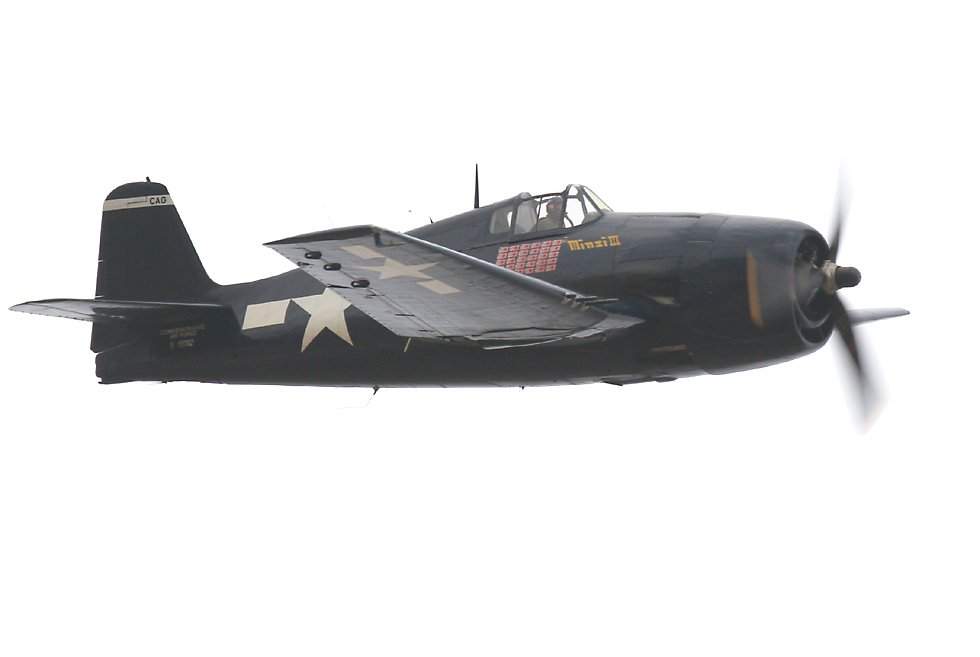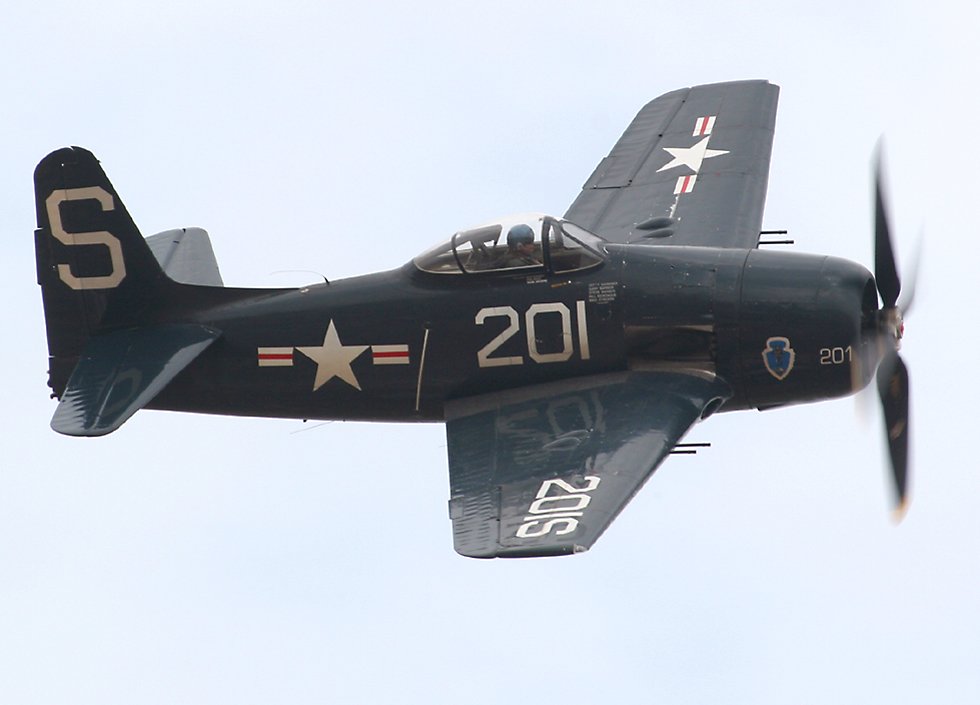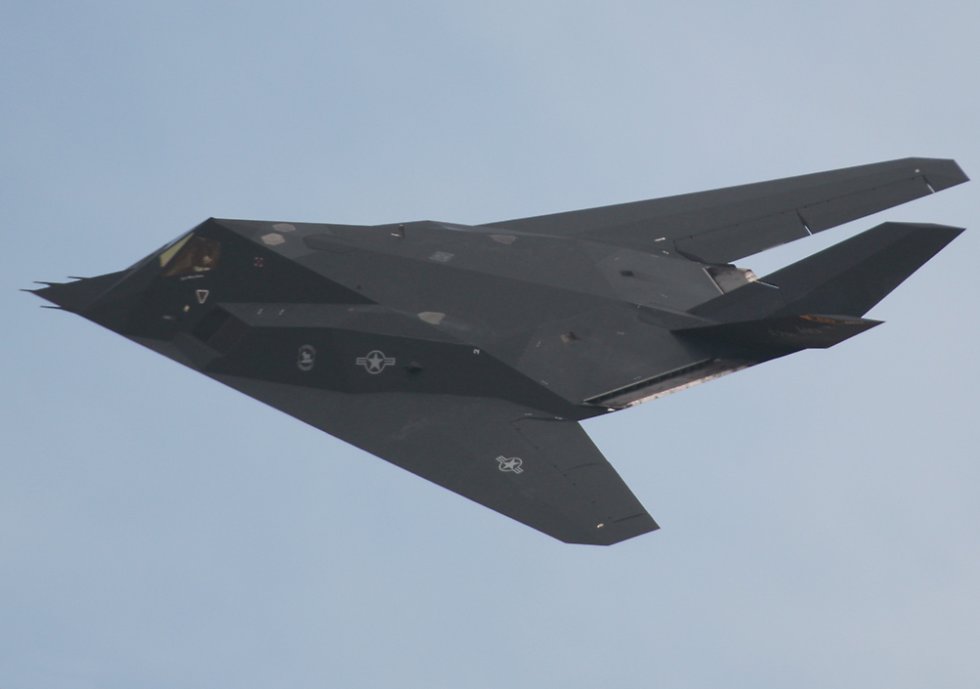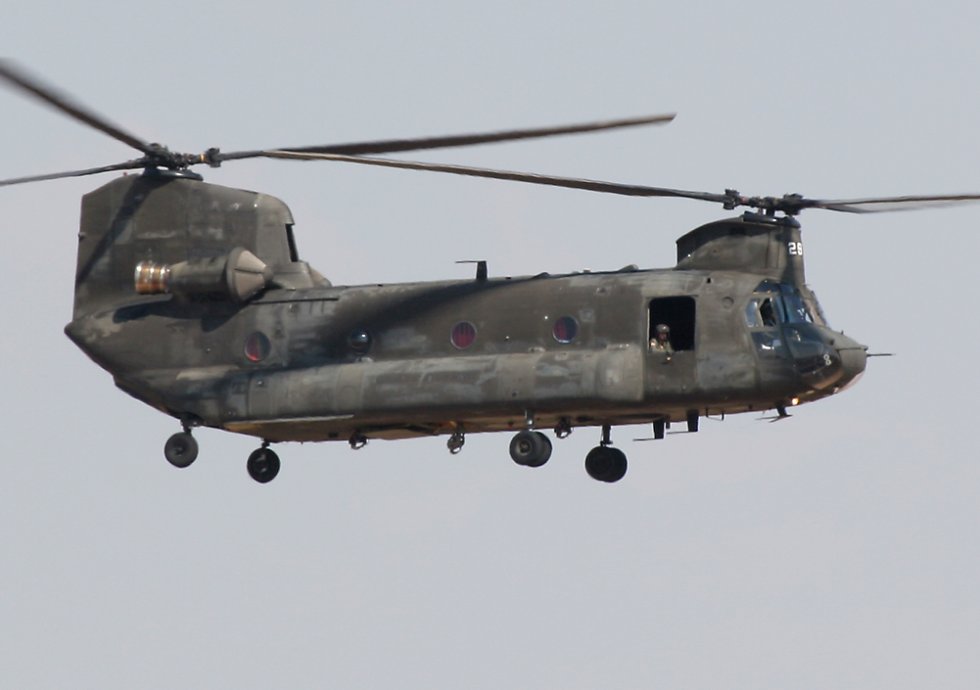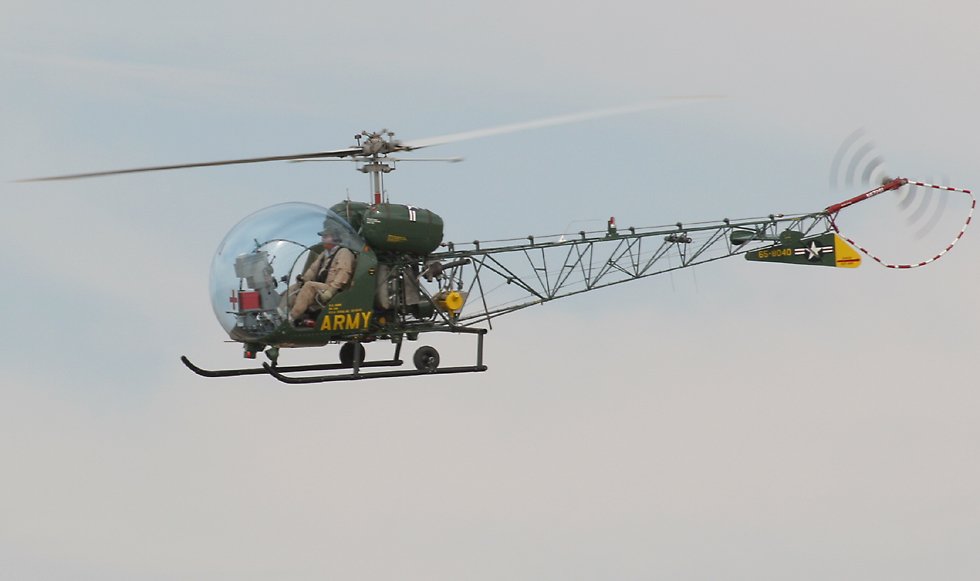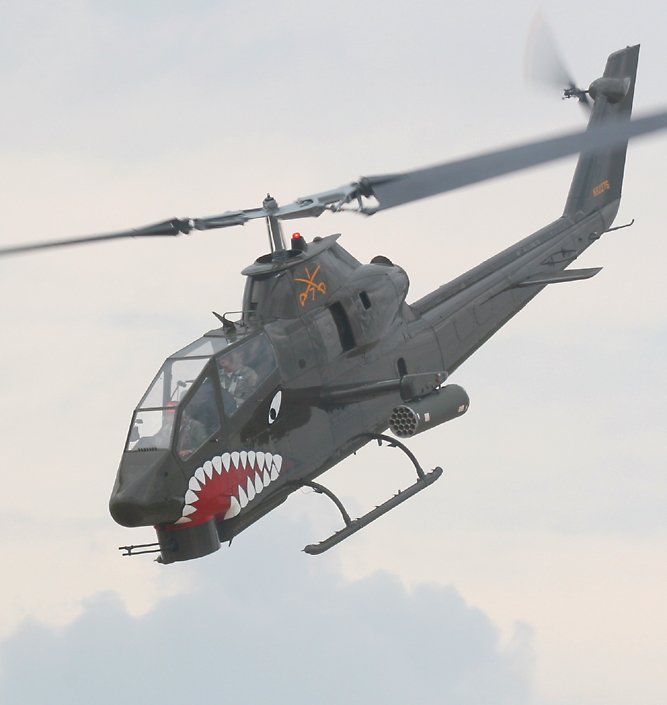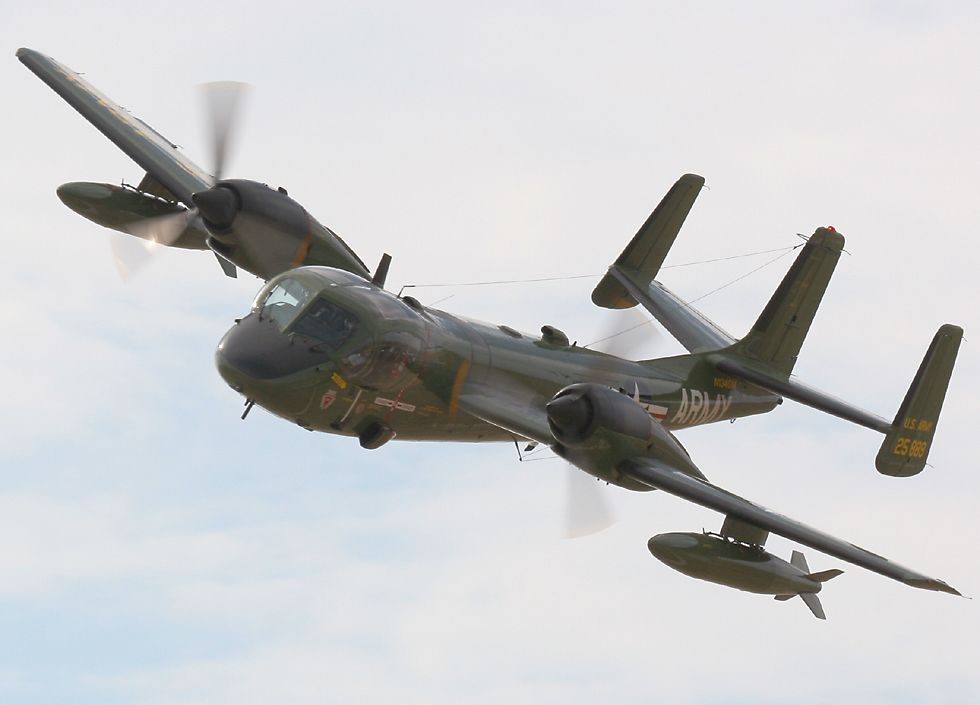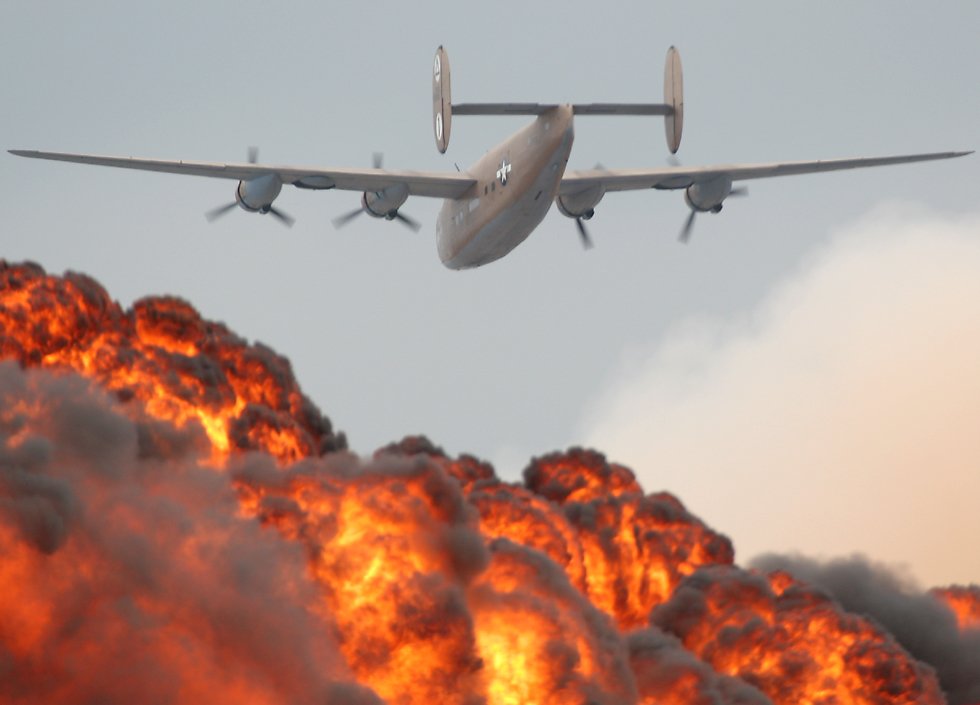Highlights of the 2006 Midland Airsho
|
The Avenger is another large single-engined naval attack aircraft of the second world war, but it was primarily designed as a torpedo bomber, although later versions were fitted with under-wing rockets and also did ordinary bombing of land targets. The Avenger's first outing, at the battle of Midway, was very inauspicious, with 5 of the 6 aircraft sent out shot down, and the survivor returning totally shot up, with one crew member dead and the other two wounded. Perhaps the most famous Avenger pilot of the war was George Bush senior, who became the 41st president of the United States. |
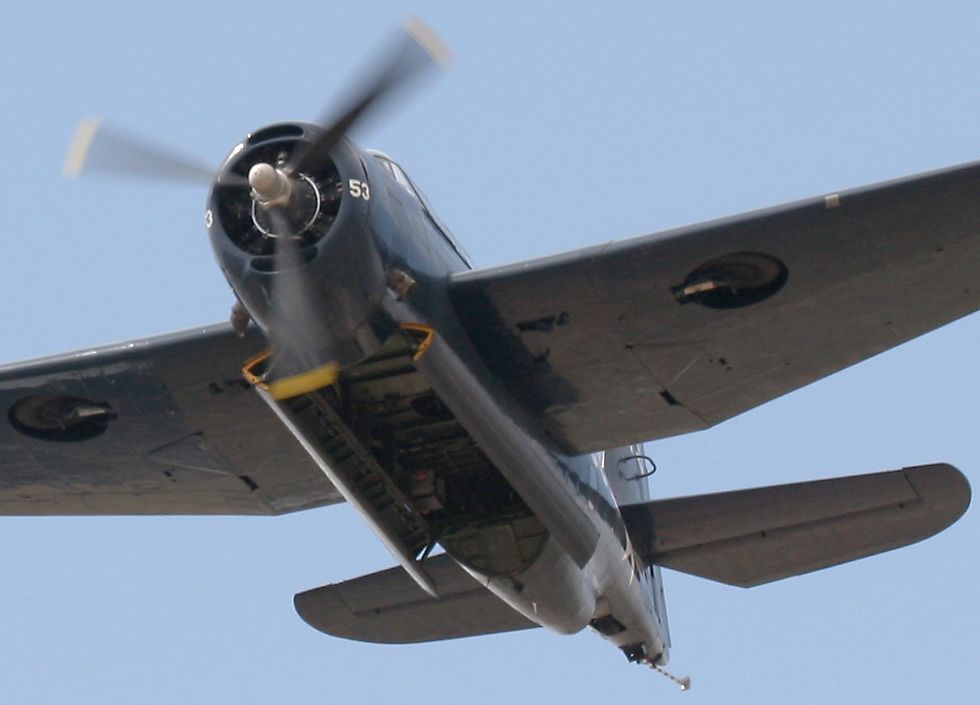 |
|
Here are the three Grumman fighters in a picture perfect naval "Legacy Flight" formation with an F-18C Hornet. |
 |
|
There were a pair of Hornets at the show; as well as the Legacy Flight the audience was also treated to an excellent solo display. |
 |
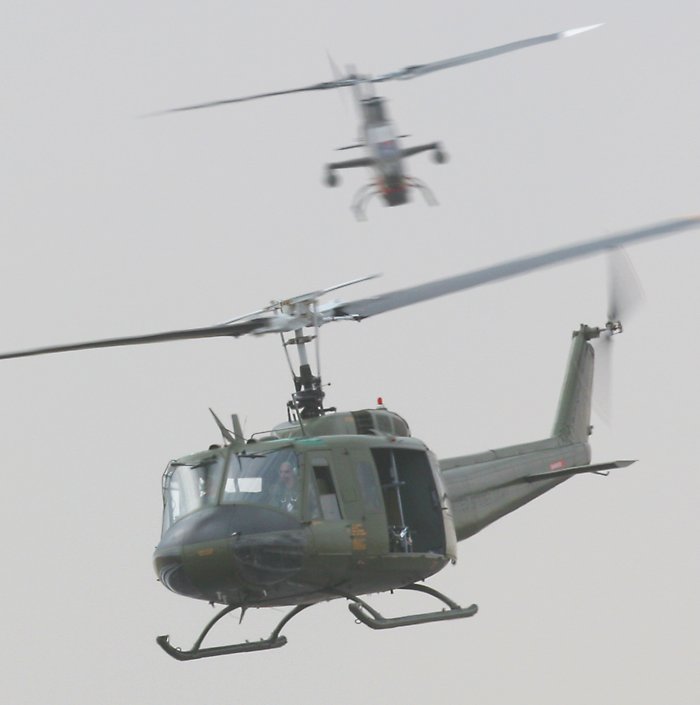
The Huey performed fairly well as a gunship, however the Bell company decided that a helicopter designed specifically for that role would be even better, so they started a private venture project to develop a specialized gunship. Strangely, the army wasn't too interested in the project, they passed over Bell and instead asked Lockheed to develop what became the AH-56 Cheyenne, an extraordinary heavy battlefield "compound" helicopter with revolutionary technology such as stub wings and a pusher propeller on the tail for increased speed. In spite of interesting performance, the Cheyenne project was eventually cancelled in 1972. Bell started their gunship development with a helicopter based on the Sioux, which first flew in 1963. The army felt that the Sioux Scout was too underpowered for the role, so Bell started again, using the Iroquois as the basis. The result was the AH-1 Cobra, seen here flying behind its predecessor. |
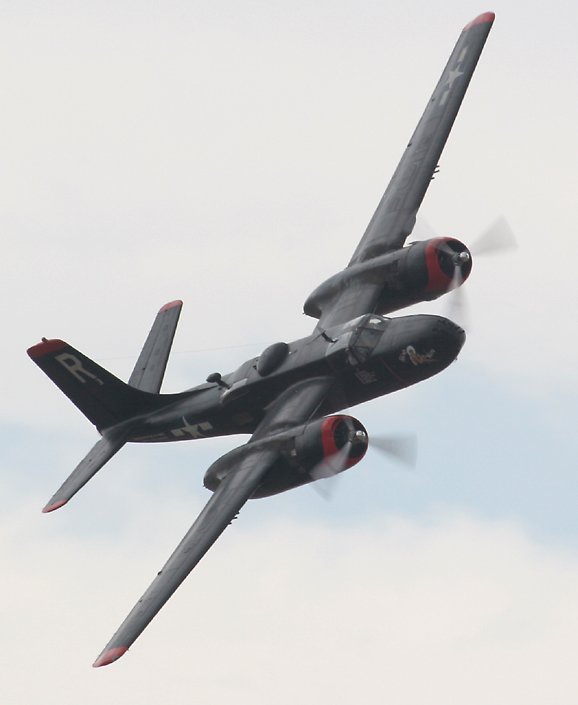
Here's another of the unusual types which Midland manages to pull out of its hat each year, a world war two A-26 Invader light attack bomber called "The Spirit of Waco". Actually the Invader had an unusually extended service life stretching all the way to 1972, which is why I've put it here with other Vietnam era aircraft. The Invader also had an unusually confusing sequence of names during its lifetime, all self-inflicted, first by the US army air force and later by the US air force. They first used the name "Invader" which had already been attached to another attack aircraft, the A-36 dive bomber version of the Mustang fighter; the A-36 was also known as the "Apache". Incomprehensibly, after the war the air force changed the Invader's designation from A-26 to B-26, causing endless confusion with the retired world war two B-26 Marauder medium bomber. The Invader was then used in Korea, with the French forces in Indo-China and during the Bay of Pigs invasion in Cuba. At the same time as this last episode was unfolding, the Invader was being used in Vietnam, where it was re-renamed back to A-26 Invader, because the government of Thailand wouldn't allow "bombers" to be based in their country. The Invader's longevity is an indication of its effectiveness, some people considering it one of the best aircraft designed in world war two. It was unusual, with a single pilot, and turrets remotely controlled by a gunner. A glass-nosed model equipped with a Norden bombsight allowed medium altitude precision bombing, or solid nosed versions like Spirit of Waco, fitted with six or eight .50 caliber machine guns, made it a terrifying strafing weapon. In spite of its late arrival during the war, its simplicity and utility ensured that it was operated by many air forces around the world. |
|
The A-1 Skyraider is another of the anachronistic propeller-driven aircraft which had a very long service life and performed long and valuable work in Vietnam. The Skyraider was known as "Sandy", "Able Dog" and many other nicknames in Vietnam, and gained fame as a member of combat search and rescue teams picking up downed American pilots. With a ten hour loiter time and an equally remarkable 8000 pound weapon payload, a pair of Skyraiders would work together with HH-3 "Jolly Green Giant" helicopters to extract pilots, the Skyraiders strafing and bombing enemy positions to allow the helicopters to do their work. After the war, captured Skyraiders were incorporated into the communist air force, you can see a Skyraider at the Vietnamese air force museum in Hanoi. |
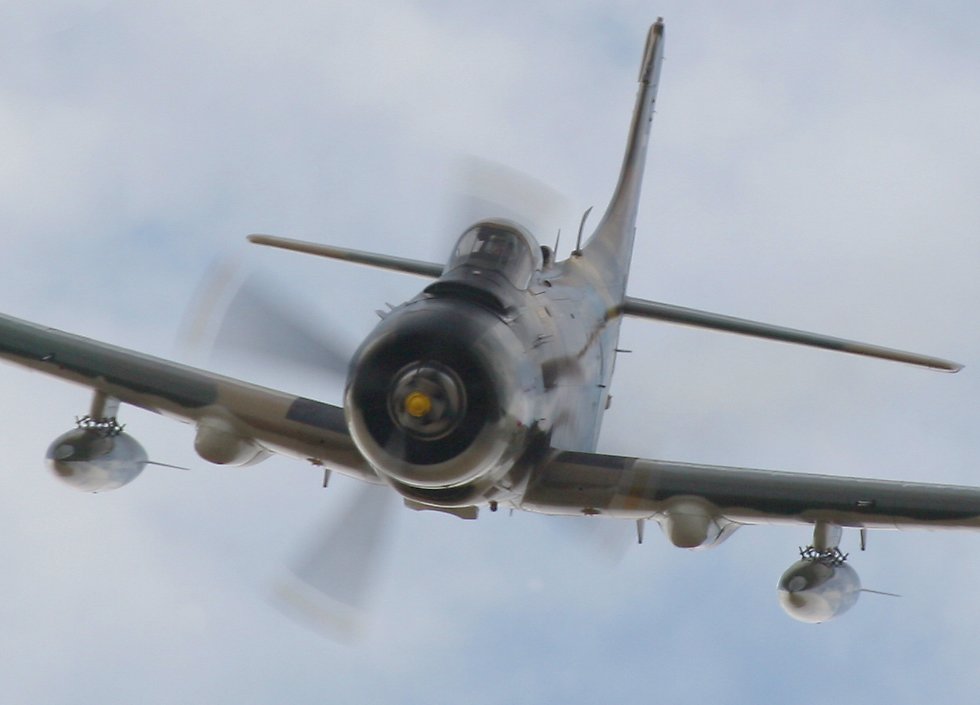 |
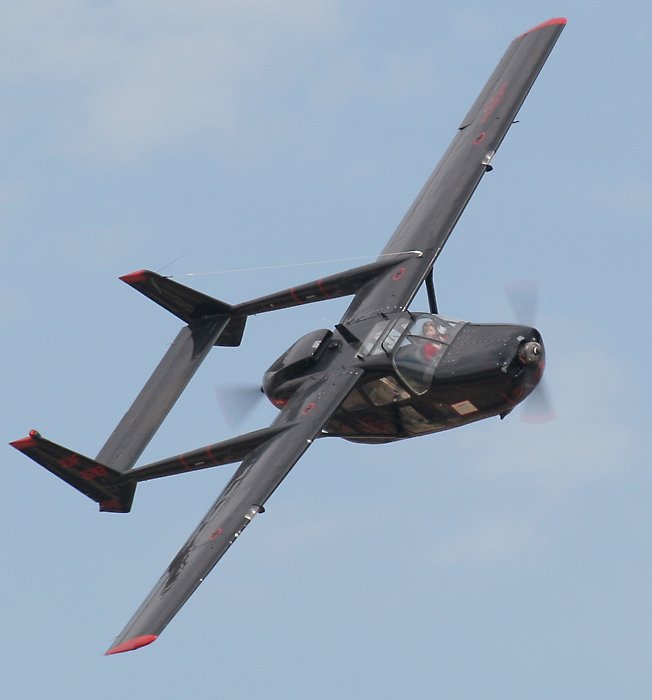
All of the pilots flying during the Vietnam war were brave, but it took a special kind of bravery to fly a Cessna at low-level into the middle of enemy territory. Actually, the Cessna O-2 Skymaster was a significant improvement on its predecessor, the single-engined O-1 Bird Dog, which also served in Vietnam. The Skymaster at least had a chance of returning if one engine stopped working. Even with this advantage, the Skymaster was one heck of a plane to go to war in, with no pilot armor. Not only that, but its role as a forward air controller required that the Bird Dogs and Skymasters skim over the jungle at treetop level to spot enemy troops and, often, to deliberately draw their fire. They would then fire smoke canistors onto the enemy position and call in a ground strike by a Phantom or other "fast mover". |
